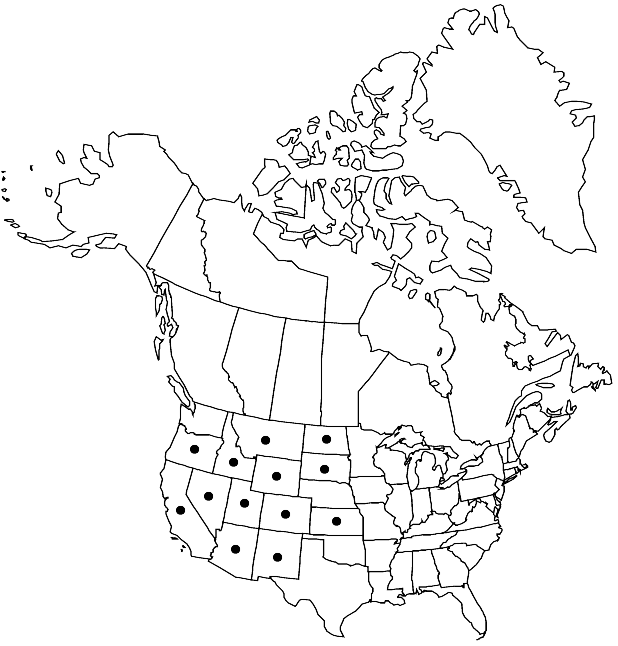Difference between revisions of "Stanleya pinnata var. pinnata"
Endemic
Synonyms: Stanleya arcuata Rydberg Stanleya canescens Rydberg Stanleya fruticosa Nuttall Stanleya glauca Rydberg Stanleya heterophylla Nuttall Stanleya pinnata subsp. inyoensis Munz & J. C. Roos Stanleya pinnata var. inyoensis Stanleya pinnatifida
FNA>Volume Importer |
imported>Volume Importer |
||
| Line 3: | Line 3: | ||
|accepted_authority= | |accepted_authority= | ||
|publications= | |publications= | ||
| + | |special_status={{Treatment/ID/Special_status | ||
| + | |code=E | ||
| + | |label=Endemic | ||
| + | }} | ||
|basionyms= | |basionyms= | ||
|synonyms={{Treatment/ID/Synonym | |synonyms={{Treatment/ID/Synonym | ||
| Line 73: | Line 77: | ||
|publication title= | |publication title= | ||
|publication year= | |publication year= | ||
| − | |special status= | + | |special status=Endemic |
| − | |source xml=https:// | + | |source xml=https://bibilujan@bitbucket.org/aafc-mbb/fna-data-curation.git/src/bb6b7e3a7de7d3b7888a1ad48c7fd8f5c722d8d6/coarse_grained_fna_xml/V7/V7_1203.xml |
|tribe=Brassicaceae tribe Thelypodieae | |tribe=Brassicaceae tribe Thelypodieae | ||
|genus=Stanleya | |genus=Stanleya | ||
Revision as of 23:52, 27 May 2020
Cauline leaves: blade oblanceolate to broadly lanceolate, margins (at least proximal ones) lyrate-pinnatifid or runcinate. Flowers: sepals 9–16 mm; petals 10–20 mm, claw 5–10 mm; gynophore 10–28 mm, pubescent basally. Fruits 3–9 cm; ovules 22–38 per ovary. Seeds 2.5–4 mm. 2n = 28, 56.
Phenology: Flowering Apr–Sep.
Habitat: Prairie hills, chalk bluffs, shale slopes, talus, sagebrush and mixed shrub communities, pinyon-juniper areas, selenium-rich areas, barren hillsides, sandstone breaks and cliffs, dry sandy or gravelly washes, sand dunes, canyon bottoms, soils derived from limestone, sandstone, basaltic, and volcanic rocks
Elevation: 200-2500 m
Distribution

Ariz., Calif., Colo., Idaho, Kans., Mont., Nev., N.Mex., N.Dak., Oreg., S.Dak., Utah, Wyo.
Discussion
Subshrubby or shrubby forms of var. pinnata were recognized as a distinct var. or subsp. inyoensis. Although such growth forms occur primarily in southern California, western Nevada, and southwestern Utah, they occur sporadically throughout the species range, especially in desert habitats with sand dunes.
Selected References
None.
Lower Taxa
None.
... more about "Stanleya pinnata var. pinnata"
Prairie hills, chalk bluffs, shale slopes, … Prairie hills, chalk bluffs, shale slopes, talus, sagebrush and mixed shrub communities, pinyon-juniper areas, selenium-rich areas, barren hillsides, sandstone breaks and cliffs, dry sandy or gravelly washes, sand dunes, canyon bottoms, soils derived from limestone, sandstone, basaltic, and volcanic rockse, sandstone, basaltic, and volcanic rocks +
Trans. New York Acad. Sci. +
1889 +
Endemic +
Stanleya pinnata var. pinnata +
Stanleya pinnata +
variety +